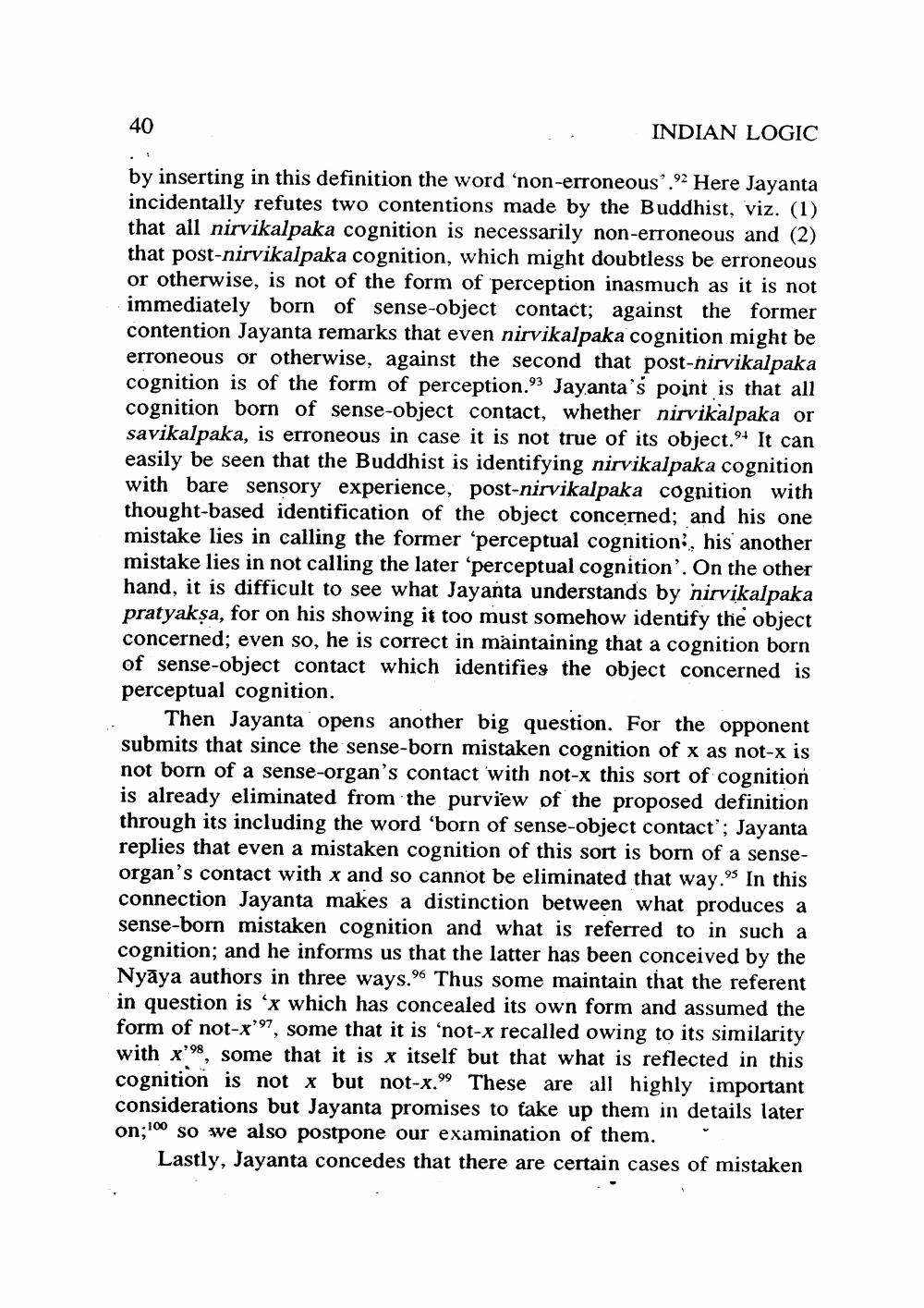________________
40
INDIAN LOGIC
by inserting in this definition the word 'non-erroneous”. 92 Here Jayanta incidentally refutes two contentions made by the Buddhist, viz. (1) that all nirvikalpaka cognition is necessarily non-erroneous and (2) that post-nirvikalpaka cognition, which might doubtless be erroneous or otherwise, is not of the form of perception inasmuch as it is not immediately born of sense-object contact; against the former contention Jayanta remarks that even nirvikalpaka cognition might be erroneous or otherwise, against the second that post-nirvikalpaka cognition is of the form of perception.93 Jayanta's point is that all cognition born of sense-object contact, whether nirvikalpaka or savikalpaka, is erroneous in case it is not true of its object.94 It can easily be seen that the Buddhist is identifying nirvikalpaka cognition with bare sensory experience, post-nirvikalpaka cognition with thought-based identification of the object concerned; and his one mistake lies in calling the former 'perceptual cognition!, his another mistake lies in not calling the later 'perceptual cognition'. On the other hand, it is difficult to see what Jayanta understands by nirvikalpaka pratyakşa, for on his showing it too must somehow identify the object concerned; even so, he is correct in maintaining that a cognition born of sense-object contact which identifies the object concerned is perceptual cognition.
Then Jayanta opens another big question. For the opponent submits that since the sense-born mistaken cognition of x as not-x is not born of a sense-organ's contact with not-x this sort of cognition is already eliminated from the purview of the proposed definition through its including the word 'born of sense-object contact'; Jayanta replies that even a mistaken cognition of this sort is born of a senseorgan's contact with x and so cannot be eliminated that way. In this connection Jayanta makes a distinction between what produces a sense-born mistaken cognition and what is referred to in such a cognition; and he informs us that the latter has been conceived by the Nyāya authors in three ways.96 Thus some maintain that the referent in question is 'x which has concealed its own form and assumed the form of not-x'97, some that it is ‘not-x recalled owing to its similarity with x'98, some that it is x itself but that what is reflected in this cognition is not x but not-x.99 These are all highly important considerations but Jayanta promises to take up them in details later on;100 so we also postpone our examination of them.
Lastly, Jayanta concedes that there are certain cases of mistaken




